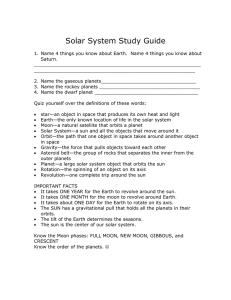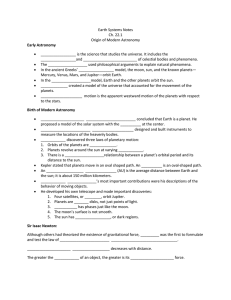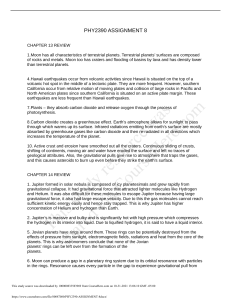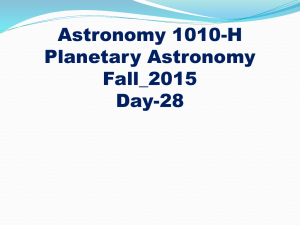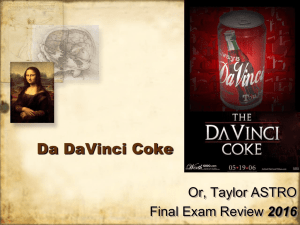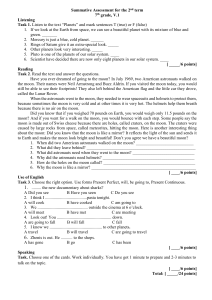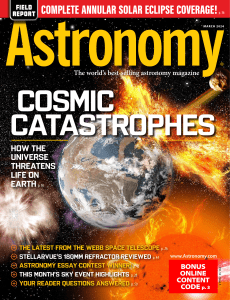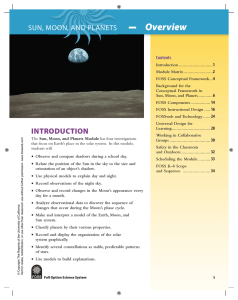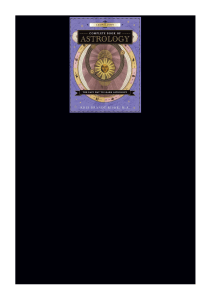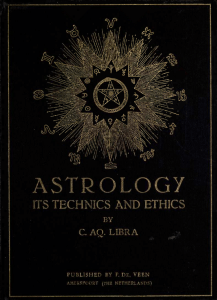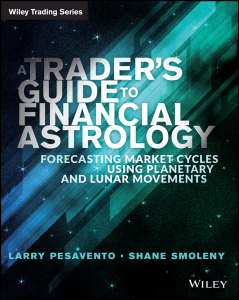LITERACY MATHS Film narrative Persuasive writing on should we explore space ?
advertisement
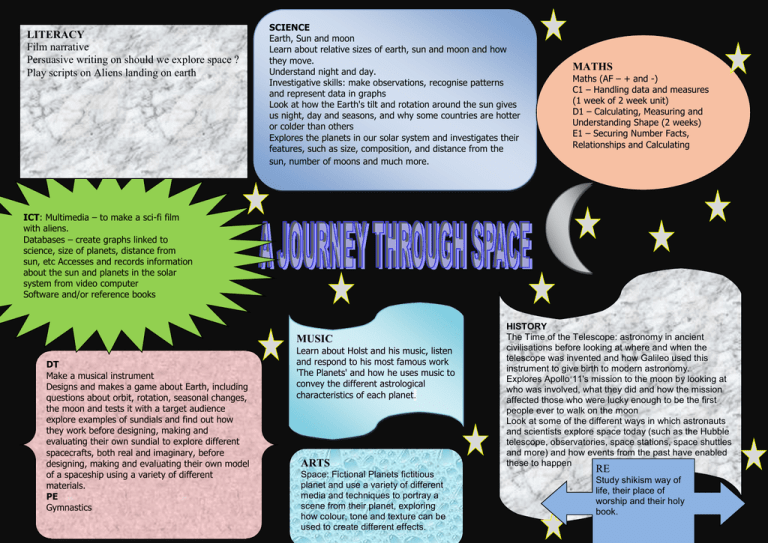
LITERACY Film narrative Persuasive writing on should we explore space ? Play scripts on Aliens landing on earth SCIENCE Earth, Sun and moon Learn about relative sizes of earth, sun and moon and how they move. Understand night and day. Investigative skills: make observations, recognise patterns and represent data in graphs Look at how the Earth's tilt and rotation around the sun gives us night, day and seasons, and why some countries are hotter or colder than others Explores the planets in our solar system and investigates their features, such as size, composition, and distance from the sun, number of moons and much more. MATHS Maths (AF – + and -) C1 – Handling data and measures (1 week of 2 week unit) D1 – Calculating, Measuring and Understanding Shape (2 weeks) E1 – Securing Number Facts, Relationships and Calculating ICT: Multimedia – to make a sci-fi film with aliens. Databases – create graphs linked to science, size of planets, distance from sun, etc Accesses and records information about the sun and planets in the solar system from video computer Software and/or reference books MUSIC DT Make a musical instrument Designs and makes a game about Earth, including questions about orbit, rotation, seasonal changes, the moon and tests it with a target audience explore examples of sundials and find out how they work before designing, making and evaluating their own sundial to explore different spacecrafts, both real and imaginary, before designing, making and evaluating their own model of a spaceship using a variety of different materials. PE Gymnastics Learn about Holst and his music, listen and respond to his most famous work 'The Planets' and how he uses music to convey the different astrological characteristics of each planet. ARTS Space: Fictional Planets fictitious planet and use a variety of different media and techniques to portray a scene from their planet, exploring how colour, tone and texture can be used to create different effects. HISTORY The Time of the Telescope: astronomy in ancient civilisations before looking at where and when the telescope was invented and how Galileo used this instrument to give birth to modern astronomy. Explores Apollo 11's mission to the moon by looking at who was involved, what they did and how the mission affected those who were lucky enough to be the first people ever to walk on the moon Look at some of the different ways in which astronauts and scientists explore space today (such as the Hubble telescope, observatories, space stations, space shuttles and more) and how events from the past have enabled these to happen RE Study shikism way of life, their place of worship and their holy book.

